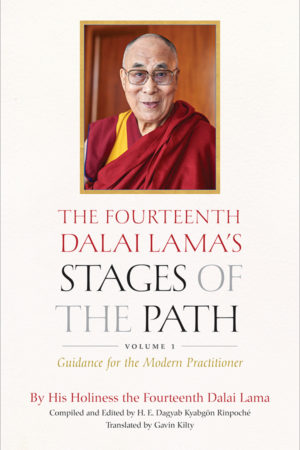
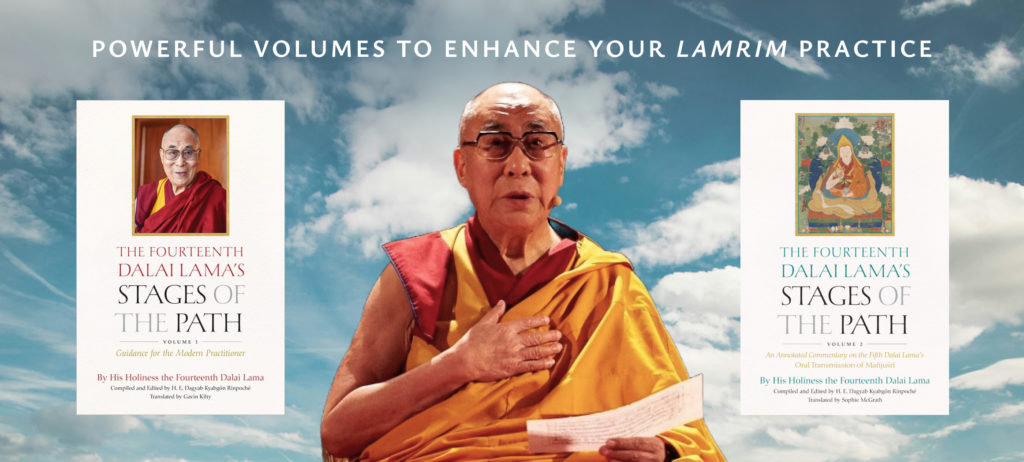
The Fourteenth Dalai Lama’s Stages of the Path Series from Wisdom Publications is a collection of books from His Holiness The Dalai Lama that systematically explain the stages of the path (lamrim) to enlightenment.
Explore the Series
CURRENT TITLES
Vol. 1: Guidance for the Modern Practitioner
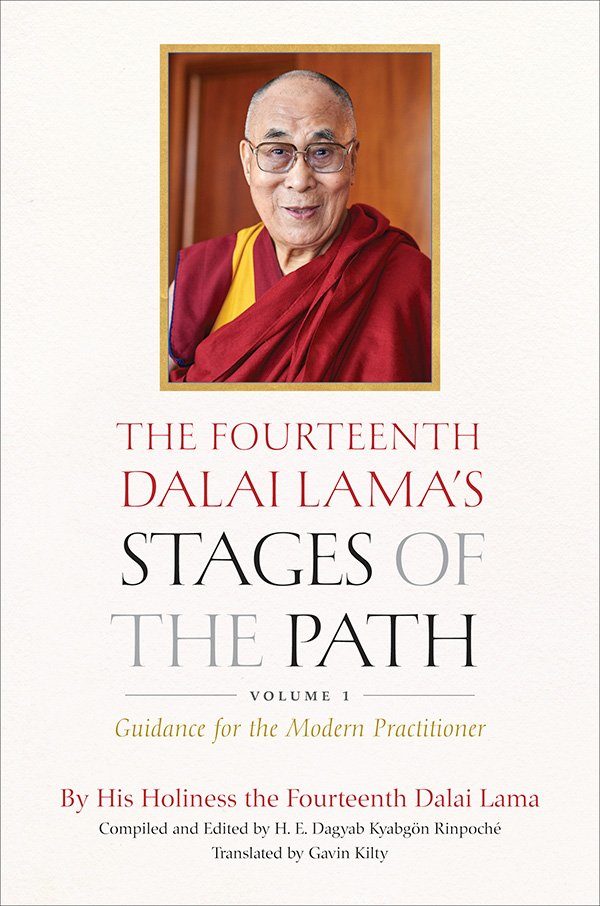
This first volume of The Fourteenth Dalai Lama’s Stages of the Path shares His Holiness’s teachings on specific topics of vital relevance to contemporary life:
– how kindness and compassion are the foundation for individual happiness and world peace;
– how we can solve manmade problems;
– how Buddhism does not conflict with modern science and can actually contribute to its advancement;
– how gender equality is fundamental for a decent and just society;
– and much more.
His Holiness’s messages on these topics will be of value to all readers, Buddhists and non-Buddhists alike. These teachings embody the Dalai Lama’s generous warmth and humor, his expertise in presenting important Buddhist ideas, and his ability to inspire us toward greater kindness and happiness.
Vol. 2: An Annotated Commentary on the Fifth Dalai Lama’s Words of Mañjuśrī
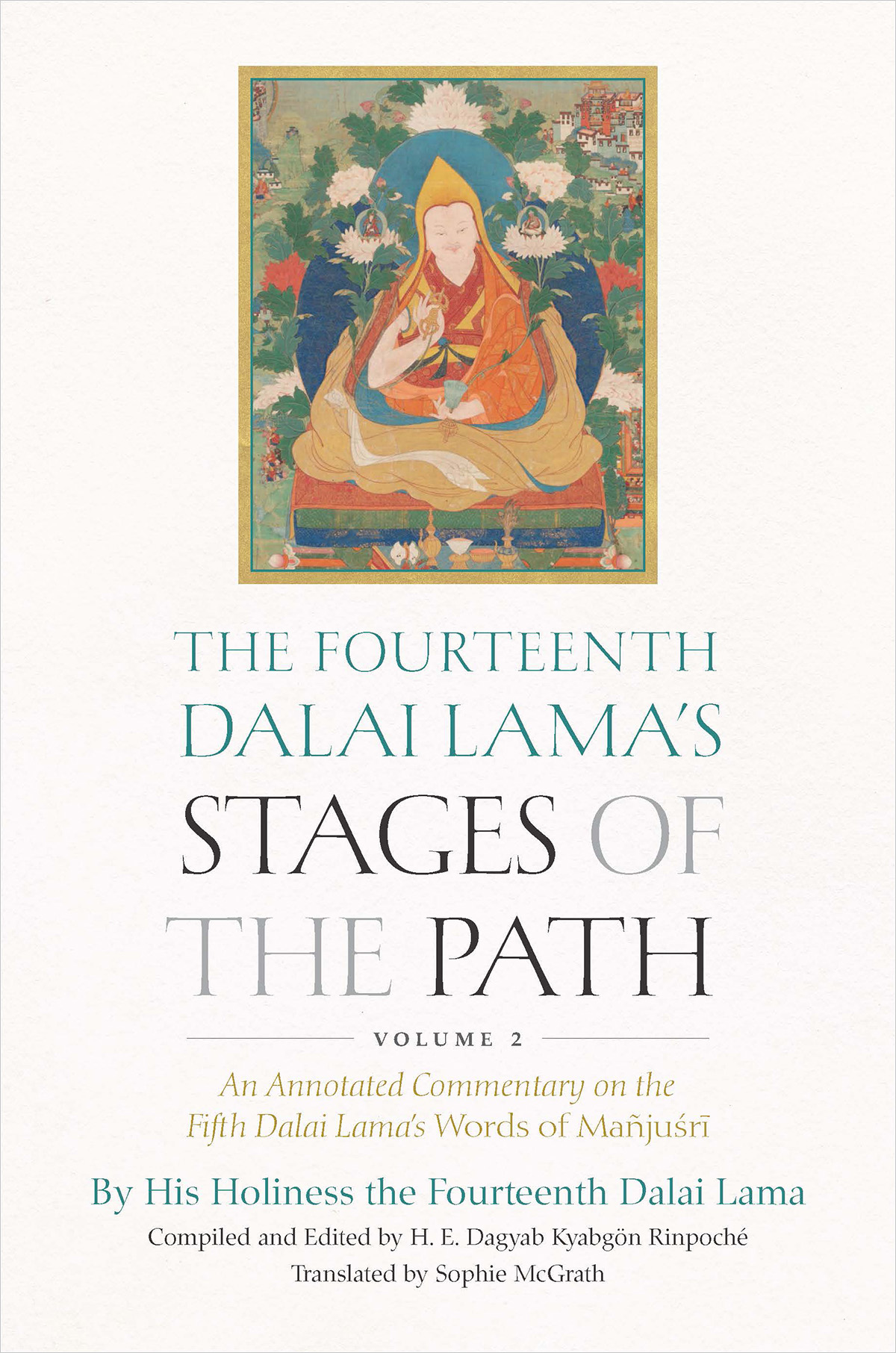
The Fourteenth Dalai Lama’s Stages of the Path, Volume 2: An Annotated Commentary on the Fifth Dalai Lama’s Words of Mañjuśrī is the second volume of the Dalai Lama’s outline of Buddhist theory and practice.
Having introduced Buddhist ideas in the context of modern society in volume 1, the Dalai Lama turns here to a traditional presentation of the complete path to enlightenment, from developing faith in the Dharma to attaining the highest wisdom. This book, compiled by the revered Tibetan lama Dagyab Rinpoché, comments on the Fifth Dalai Lama’s stages of the path titled Oral Transmission of Mañjuśrī.
The volume will appeal to all readers interested in the Dalai Lama’s works, both those new to Buddhism and those looking to deepen their understanding of the Tibetan presentation of the Buddhist path.
Meet the Author
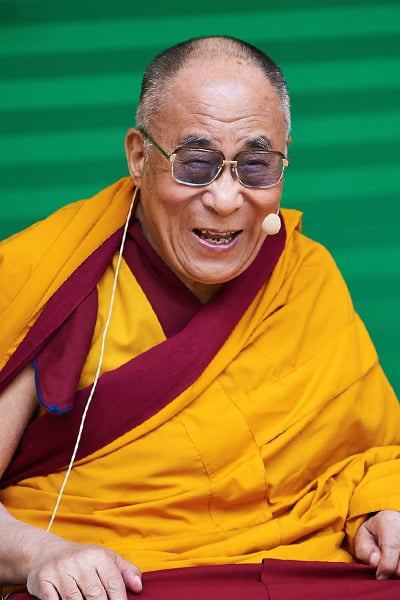 Tenzin Gyatso, the Fourteenth Dalai Lama, is the spiritual leader of the Tibetan people. He frequently describes himself as a simple Buddhist monk. Born in northeastern Tibet in 1935, he was as a toddler recognized as the incarnation of the Thirteenth Dalai Lama and brought to Tibet’s capital, Lhasa. In 1950, Mao Zedong’s Communist forces made their first incursions into eastern Tibet, shortly after which the young Dalai Lama assumed the political leadership of his country. He passed his scholastic examinations with honors at the Great Prayer Festival in Lhasa in 1959, the same year Chinese forces occupied the city, forcing His Holiness to escape to India. There he set up the Tibetan government-in-exile in Dharamsala, working to secure the welfare of the more than 100,000 Tibetan exiles and prevent the destruction of Tibetan culture. In his capacity as a spiritual and political leader, he has traveled to more than sixty-two countries on six continents and met with presidents, popes, and leading scientists to foster dialogue and create a better world. In recognition of his tireless work for the nonviolent liberation of Tibet, the Dalai Lama was awarded the Nobel Peace Prize in 1989. In 2012, he relinquished political authority in his exile government and turned it over to democratically elected representatives.
Tenzin Gyatso, the Fourteenth Dalai Lama, is the spiritual leader of the Tibetan people. He frequently describes himself as a simple Buddhist monk. Born in northeastern Tibet in 1935, he was as a toddler recognized as the incarnation of the Thirteenth Dalai Lama and brought to Tibet’s capital, Lhasa. In 1950, Mao Zedong’s Communist forces made their first incursions into eastern Tibet, shortly after which the young Dalai Lama assumed the political leadership of his country. He passed his scholastic examinations with honors at the Great Prayer Festival in Lhasa in 1959, the same year Chinese forces occupied the city, forcing His Holiness to escape to India. There he set up the Tibetan government-in-exile in Dharamsala, working to secure the welfare of the more than 100,000 Tibetan exiles and prevent the destruction of Tibetan culture. In his capacity as a spiritual and political leader, he has traveled to more than sixty-two countries on six continents and met with presidents, popes, and leading scientists to foster dialogue and create a better world. In recognition of his tireless work for the nonviolent liberation of Tibet, the Dalai Lama was awarded the Nobel Peace Prize in 1989. In 2012, he relinquished political authority in his exile government and turned it over to democratically elected representatives.
His Holiness frequently states that his life is guided by three major commitments: the promotion of basic human values or secular ethics in the interest of human happiness, the fostering of interreligious harmony, and securing the welfare of the Tibetan people, focusing on the survival of their identity, culture, and religion. As a superior scholar trained in the classical texts of the Nalanda tradition of Indian Buddhism, he is able to distill the central tenets of Buddhist philosophy in clear and inspiring language, his gift for pedagogy imbued with his infectious joy. Connecting scientists with Buddhist scholars, he helps unite contemplative and modern modes of investigation, bringing ancient tools and insights to bear on the acute problems facing the contemporary world. His efforts to foster dialogue among leaders of the world’s faiths envision a future where people of different beliefs can share the planet in harmony. Wisdom Publications is proud to be the premier publisher of the Dalai Lama’s more serious and in-depth works.
Know the Lineage
Atiśa Dīpaṃkara (982–1054) was a famed scholar and teacher from the Indian monastic university of Vikramalaśīla and wrote Bodhipathapradīpa (A Lamp for the Path to Enlightenment), the book that brought about proliferation of the lamrim teachings in Tibet.
Tsongkhapa Losang Dragpa (1357–1419) was one of the finest scholar-practitioners in Tibetan Buddhism. Renowned for both his written works and his meditative accomplishments, he founded the Gelug school, which produced the lineage of the Dalai Lamas. He famously wrote the lamrim (The Stages of the Path to Enlightenment) in brief, middling, and great forms.
Sonam Gyatso, the Third Dalai Lama (1543–1588), was a famed teacher who studied under the great Panchen Sonam Dragpa (1478–1554) and was instrumental in the spread of the Buddhist teachings from Tibet to Mongolia. He wrote one of the eight great lamrim commentaries entitled Essence of Refined Gold.
Losang Chokyi Gyaltsen, the Fourth Panchen Lama (1570–1662), was one of the most prolific Gelug masters in both sutra and tantra. He wrote the condensed, practice-oriented lamrim text The Easy Path.
Ngawang Losang Gyatso, the Fifth Dalai Lama (1617–1682), was a towering figure in his influence on spheres of both politics and spirituality in Tibet. He wrote extensively on Buddhist philosophy and practice, notably penning the important middling-length lamrim Oral Transmission of Mañjuśrī.
Losang Yeshe, the Fifth Panchen Lama (1663–1737), was preceptor of two Dalai Lamas and also the composer of The Swift Path, a practical and systematic guide to meditating on the lamrim based on The Easy Path, a more concise work by the Fourth Panchen Lama. .
Dakpo Gomchen Ngawang Dragpa (circa 15th c.) was a great scholar and tantric adept having studied the great texts under the preeminent Gelugpa masters of the day, including Gyaltsab Je, Khedrub Je, and Choeje Lodro Tenpa. He wrote the acclaimed lamrim treatise Essence of Fine Speech.

